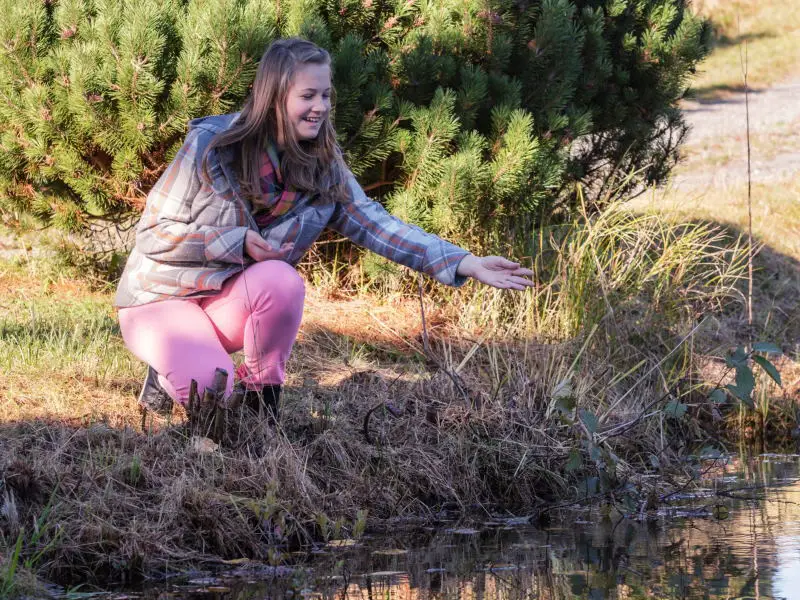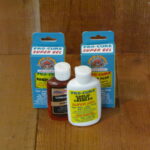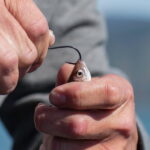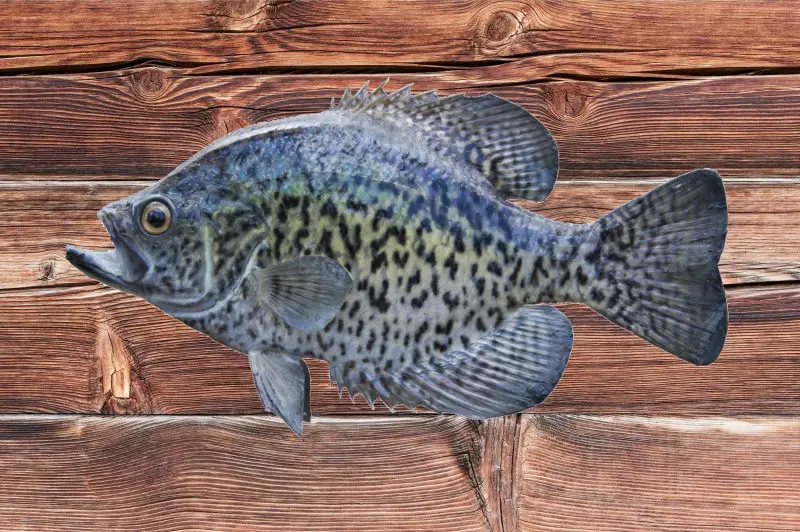Crappies are a species of freshwater fish found in North America. These fish are known by many other names, including speckled bass, and are extremely popular among fishermen. Although there are many effective ways to catch crappies, people often wonder if you can chum for crappie.
You can chum for crappie, and it’s easy. Just like most fish, minnows, insects, bits of food such as bread crumbs, as well as floating objects that sparkle, such as scales from other fish can attract schools of crappies.
In this article, I’ll explain how to chum for crappies and what you should avoid. I’ll also list what foods crappies eat and if crappies are edible or not. Read on if you want to know more.
Note: most links in this article are Amazon.com Affiliate links, see Affiliate Disclosure, thank you.
How to Chum for Crappies
There are several ways to chum for crappies. The first method is to spread food on the water’s surface to attract the crappies or the threadfin minnows they like to eat. The second is to sprinkle fish scales onto the water to reflect light, which will cause any nearby fish to come and investigate.
1. Use Food
To lure minnows or crappies to where you are fishing, you can spread dry, crumbly foods such as crushed dry dog food, bread crumbs, or my favorite toasted corn meal.
Sprinkle the food over the surface of the water in several places surrounding your fishing spot and wait. The food will attract the fish to the area you are targeting. They will travel around your line, making it easier to reel in a catch.
Some anglers will protest that your chances are best if you use live bait, but why not mix it up and increase your odds.
Tip: when you are trying to draw minnows, traditional goldfish food works extremely well. You can purchase goldfish food at your local pet store, and it typically comes in a shaker container, making it easy to spread. The downside of fish tank-type foods is they can be a bit expensive, but generic options will work the same as brand-name options.
2. Use Fish Scales
It’s commonly known that you can attract fish at night with flashlights or other light sources. But did you know you can do the same with fish scales during the day? Their reflective surface creates a winking light as they float and sink that invites fish to come and investigate.
When you land a catch, save some of its scales for later. Then, when you’re ready to chum, sprinkle them on top of the water around your spot and wait. Like with food, it’s best to do so in several areas around your fishing spot.

Other Helpful Tips For Chumming for Crappies
Now that you know how to use food and fish scales to chum for crappies, you should also know what you shouldn’t do when chumming for crappies. You should avoid preparing your chum on the spot.
Try to minimize the mess by using a plastic bag to hold your chum, and avoid chumming too much. You should also check the laws that govern your fishing spot, so you don’t end up chumming where it’s illegal.
Make Sure Your Prepare Your Chum Beforehand
It’s best to prepare your chum either earlier in the day or the night before. Not only does this minimize waste because of accidents, but it means you won’t get the chum all over your hands, requiring you to disturb your fishing spot to wash it off.
If necessary, you can refrigerate your chum until you’re ready to use it. It’s common practice and will help keep it from going bad. Fish can sense when food has gone bad and will sicken them, so try to use fresh chum if you can.
As for my favorite chum cornmeal, you will need to toast it the night before. I use a large stainless steel frying pan with one cup of cornmeal. I stir the cornmeal on medium-low until it smells nutty and gets a little brown. You can run your stove a bit higher if you like, but pay close attention not to burn it.
Finally, you can make a good chum mixture from your leftover Crappie carcasses or other species from previous trips. I will cut up the fish carcasses into large chunks and lightly chop them in a food processor.
Next, I fill a freezer bag about 2 or 3 inches deep then I freeze it until my next fishing trip. You can break the chum into smaller pieces, throw it into the water, and as it thaws, the chum will spread into the water. Also, you can add scents, like Procure crappie super gel.
Minimize Messes by Using a Plastic Bag
Keep your chum in a plastic bag and dispense it from there. Doing this will minimize mess on your hands and at your spot.
Also, It’ll prevent spills at many junctures during your journey to your fishing spot, and help your chum stay fresh, and protect it from contaminants.
Don’t Chum Too Heavily
Try not to chum too much in any one spot. If the fish you want to catch get full feasting on chum, they won’t bite, or they will bite weakly. They may even forgo your lure entirely and head somewhere else.
Not only that, but using large amounts of chum makes a mess that might attract animals. It can also contaminate the water where you just fished with rotting organic material.
Don’t Chum Too Lightly
The flip-side of chumming too much is chumming too little. If you don’t chum enough, early arrivals will gobble up the chum too quickly, and it won’t attract fish that are farther away.
The scent will never reach the school of crappies you want to catch, and what minnows you attract will disperse before anything comes to hunt them.
However, when fishing from a dock where you can see the minnows, the goal is to keep them around. As the minnows eat the chum, you can sprinkle a little bit more into the water.
The feasting minnows will surely attract your target crappie, but you might need patience. This will be the perfect time for a cast-a-bubble clear bobber and a 1/8oz minnow jig right in the middle of the school.
Don’t Chum in Areas Where It’s Illegal
In some areas, chumming is illegal. Typically, this is because fish and wildlife come to associate feeding with human presence. This can reduce their natural fear of humans, increasing danger to wildlife and humans alike.
Additionally, chumming makes a mess and contaminates the water if done too much. Many anglers do not know when it is too much for the ecosystem to handle, and some people are just plain messy.
Before you chum, check the laws in the area that you’re fishing in. If there are laws against chumming, either fish without doing so or move elsewhere. Breaking these laws can cause fines, so it’s best to obey them.
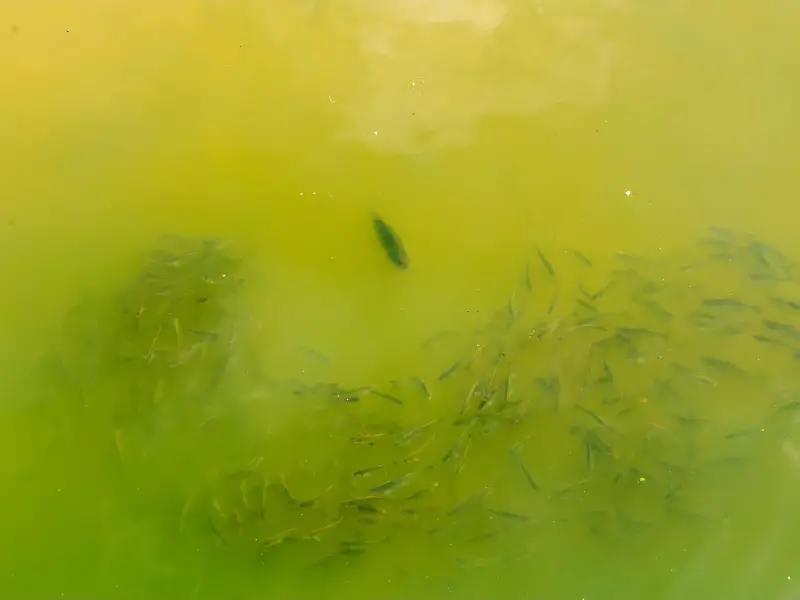
What Foods Do Crappies Eat?
Now that you know the do’s and don’ts of chumming. You may wonder what other foods crappies eat. Although you can use dog food, crappies eat zooplankton, insects, grass or ghost shrimp, threadfin minnows, crayfish, and frogs.
They also eat juvenile fish native to their habitats, such as other crappies, pikes, bluegills, and walleyes. If you’re determined, you can also use any of these to chum.
Do take care never to use a live fish not native to the water system you are fishing in. When released as chum or used as live bait, these juvenile fish can become invasive and kill off all the native fish species.
Can You Eat Crappies?
Like most fish, crappies are edible and quite delicious. Their white meat doesn’t have the fishy taste commonly associated with seafood, and they contain lots of healthy fats and proteins. This makes them a favorite of anglers who like to eat what they catch.
However, you can’t eat every crappie you catch. To learn more about the best-sized crappies to eat, check out my article What Size Crappie Should You Keep?
Conclusion
Chumming is a great way to attract crappies, but it’s important to do it correctly. Use the right kind of chum, don’t chum too heavily or too lightly, and don’t chum in areas where it’s illegal.
Crappies eat various foods, so you can use different things for chum, such as crushed dry kibble, insects, minnows, and other young fish in that body of water.
And finally, remember that not all crappies are good to eat – only keep the ones that are big enough. With these tips in mind, you’re sure to have a great time fishing for crappies!
